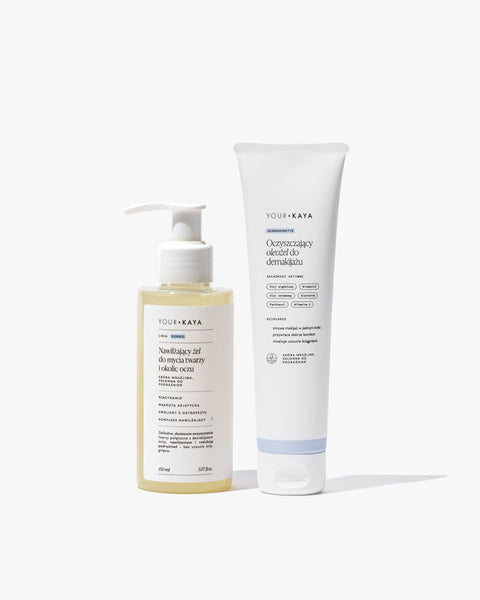The cooling associated with the rapidly approaching winter is also associated with a deterioration of air quality and an intensification of smog .
Why? Cold air is denser and moves slower than warm air, which means that cold air captures pollutants but gets rid of them more slowly, and as a result, smog lasts longer.
Numerous studies show a correlation between increased levels of particulate matter in the air and adverse health effects (including skin condition! ).
How does smog affect the skin?
Premature skin aging may result from the negative impact of external factors : skin exposure to sunlight (and contact with harmful UVB or UVA radiation), smog and air pollution .
They can cause so-called oxidative stress – an imbalance between harmful free radicals (factors that accelerate skin aging) and the antioxidants that neutralize them .
Smog may also cause the occurrence and intensification of acne lesions .
A study conducted in China showed that high levels of airborne particulate matter increased the incidence of acne breakouts among patients.
The skin microbiome is made up of microorganisms that live on it. Not all of them are harmful, however – by acting in symbiosis with the body, they protect the skin from colonization by pathogenic organisms and stimulate the immune system response. The skin microbiome is the first to be exposed to the harmful effects of smog.
Chronic exposure to smog may be responsible for disturbing the balance of the skin's microbial communities .
Smog and the skin's hydrolipid barrier
Taking care of the quality of the skin's hydrolipid barrier is one of the most important actions that protect our skin from the harmful effects of pollution.
Studies have shown that exposure of the epidermis to concentrated particles of heavy metals and ozone in polluted air causes an increase in reactive oxygen species . They initiate the process of lipid oxidation and stimulate inflammatory skin reactions .
Lipids are essential for maintaining the proper balance of the epidermal barrier and are involved in protection against excessive transepidermal water loss.
- Damage to the hydrolipid barrier facilitates the penetration of harmful substances into our skin. People who have damage to this barrier may be particularly sensitive to problems caused by smog. In such people, the effects of smog may lead to the exacerbation of existing skin problems - says dermatologist Katarzyna Pyrkosz .
How to protect your skin from smog?
– Reducing exposure to harmful compounds reduces the risk of their adverse effects – emphasizes doctor Pyrkosz .
Cleansing and moisturising are the two most important steps in your skincare routine:
- By properly cleansing the skin, we remove harmful particles from its surface. For this purpose, it is best to use gentle cleansing products that are washed off with water . In turn, improper cleansing of the skin can cause damage to the skin's protective barrier and promote the penetration of harmful substances into its depths.
- During the day, you should therefore use creams with a protective effect . These preparations should have a moisturizing effect , protecting the skin's barrier functions . It is also worth considering antioxidants in your care , which protect against the damaging effects of free radicals.
Read more about a basic skincare routine here .
Does SPF protect the skin against smog?
Sunscreens are substances that protect the skin from the effects of harmful solar radiation by absorbing , reflecting , scattering or deflecting UV photons so that they do not penetrate and are not absorbed by the skin components.
– UV radiation can intensify the damaging effects of toxic substances contained in smog. The simultaneous effects of air pollution and UV radiation can also increase the risk of carcinogenesis , i.e. the development of malignant tumors in our skin – points out doctor Katarzyna Pyrkosz . – The use of preparations with the appropriate SPF is an integral element of protection against the harmful effects of smog on our skin.
Created at: 20/10/2022
Updated at: 01/06/2023






































































































































